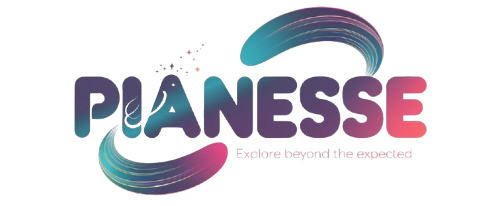Max Funded Indexed Universal Life: A Secure Investment

Max Funded Indexed Universal Life (IUL) insurance is a sophisticated financial product that combines the benefits of life insurance with the potential for cash value accumulation linked to a stock market index. Unlike traditional whole life policies, which offer fixed premiums and guaranteed cash values, max funded IULs allow policyholders to pay higher premiums, thereby maximizing the cash value component. This strategy is particularly appealing to individuals seeking both death benefit protection and a vehicle for long-term savings or investment growth.
The structure of a max funded IUL is designed to provide flexibility in premium payments and death benefits. Policyholders can adjust their premiums and death benefits over time, which can be advantageous in adapting to changing financial circumstances. The cash value grows based on the performance of a selected index, such as the S&P 500, but without direct investment in the stock market.
This means that while the cash value can increase significantly during market upswings, it is also protected from losses during downturns, as most policies include a floor that guarantees a minimum return.
Key Takeaways
- Max Funded Indexed Universal Life (IUL) is a life insurance policy that allows policyholders to allocate the maximum amount of premium towards the cash value component, providing potential for higher returns.
- The benefits of max funding include potential for tax-deferred growth, access to cash value through policy loans, and a death benefit for beneficiaries.
- Max funded IUL works by allocating a higher percentage of premium towards the cash value component, which is then linked to an index, such as the S&P 500, to potentially earn interest.
- When comparing max funded IUL to other investment options, it’s important to consider the potential for tax-free withdrawals, downside protection, and the ability to customize the policy to fit individual financial goals.
- Tax advantages of max funded IUL include tax-deferred growth, tax-free withdrawals up to the cost basis, and the ability to pass on the death benefit to beneficiaries income tax-free.
- Risks and considerations of max funding include the potential for policy loans to reduce the death benefit, the impact of policy fees on cash value growth, and the performance of the linked index.
- Choosing the right policy for your financial goals involves considering factors such as risk tolerance, liquidity needs, and long-term financial objectives.
- Working with a financial advisor for max funded IUL can help individuals understand the policy features, customize the policy to fit their needs, and navigate the complexities of life insurance and investment planning.
The Benefits of Max Funding
One of the primary benefits of max funding an Indexed Universal Life policy is the potential for significant cash value growth. By contributing the maximum allowable amount to the policy, individuals can take advantage of the compounding interest that occurs within the cash value account. This compounding effect can lead to substantial growth over time, especially when combined with the index-linked returns that can outperform traditional savings accounts or fixed-income investments.
Additionally, max funding provides a unique blend of life insurance protection and investment opportunity. The death benefit ensures that beneficiaries are financially secure in the event of the policyholder’s passing, while the cash value can be accessed during the policyholder’s lifetime for various needs, such as retirement income, education expenses, or emergency funds. This dual-purpose nature of max funded IULs makes them an attractive option for those looking to balance protection with growth potential.
How Max Funded Indexed Universal Life Works

Max funded Indexed Universal Life policies operate on a principle of flexibility and growth potential. When a policyholder pays premiums, a portion goes toward the cost of insurance, while the remainder is allocated to the cash value component. The cash value grows based on a crediting strategy linked to a specific index, typically with caps and floors that define the maximum gains and minimum losses.
For instance, if the chosen index performs well, the cash value may receive a credit up to a certain cap, while if the index performs poorly, the policyholder is protected from losing any of their accumulated cash value. The mechanics of how this growth occurs are crucial for understanding max funded IULs. The policyholder can choose from various crediting methods, such as annual point-to-point or monthly averaging, which can affect how returns are calculated.
Additionally, many policies offer riders that can enhance benefits or provide additional options for accessing cash value. For example, some policies may include an accelerated death benefit rider that allows access to a portion of the death benefit in case of terminal illness.
Comparing Max Funded Indexed Universal Life to Other Investment Options
| Investment Option | Max Funded Indexed Universal Life | Other Options |
|---|---|---|
| Market Participation | Participates in market gains | Depends on specific investment |
| Downside Protection | Protected from market losses | May experience losses |
| Tax Benefits | Tax-deferred growth and tax-free withdrawals | Depends on investment type |
| Flexibility | Flexible premium payments and access to cash value | Varies by investment |
When evaluating max funded Indexed Universal Life policies against other investment options, it is essential to consider factors such as risk tolerance, liquidity needs, and long-term financial goals. Traditional investment vehicles like stocks and mutual funds offer higher potential returns but come with increased volatility and risk. In contrast, max funded IULs provide a more conservative approach by offering downside protection while still allowing for growth linked to market performance.
Another comparison can be made with whole life insurance policies. While whole life offers guaranteed cash value growth and fixed premiums, it typically has lower growth potential compared to max funded IULs due to its conservative investment strategy. Furthermore, whole life policies often require higher premiums for similar death benefits and may not provide the same level of flexibility in adjusting coverage or premium payments.
This makes max funded IULs an appealing alternative for those who want both life insurance and investment growth without sacrificing flexibility.
Tax Advantages of Max Funded Indexed Universal Life
One of the most compelling aspects of max funded Indexed Universal Life policies is their favorable tax treatment. The cash value growth within an IUL is tax-deferred, meaning that policyholders do not pay taxes on any gains as long as they remain within the policy. This feature allows for more substantial accumulation over time compared to taxable investment accounts where capital gains taxes can erode returns.
Moreover, when structured correctly, withdrawals from the cash value can be taken as loans against the policy rather than distributions. This means that policyholders can access their funds without triggering immediate tax liabilities. As long as the policy remains in force and is not classified as a Modified Endowment Contract (MEC), these loans can be repaid on flexible terms, further enhancing the tax efficiency of this financial product.
Risks and Considerations of Max Funding

While max funded Indexed Universal Life policies offer numerous advantages, they are not without risks and considerations that potential policyholders should carefully evaluate. One significant risk is related to market performance; although there is a floor protecting against losses, if the chosen index performs poorly over an extended period, it could limit cash value growth significantly. Additionally, if a policyholder takes out loans against their cash value without repaying them, it could reduce the death benefit and potentially lead to policy lapse if not managed properly.
Another consideration involves understanding the costs associated with max funded IULs. The cost of insurance increases with age, which can impact the overall performance of the policy if not adequately funded.
Therefore, it is crucial for individuals considering this type of policy to conduct thorough research and possibly consult with financial professionals to ensure they fully understand all aspects before committing.
Choosing the Right Policy for Your Financial Goals
Selecting the right max funded Indexed Universal Life policy requires careful consideration of individual financial goals and circumstances. Factors such as age, health status, risk tolerance, and long-term objectives play critical roles in determining which policy features will be most beneficial. For instance, younger individuals may prioritize policies with lower initial costs and higher growth potential, while older individuals might focus on maximizing death benefits or ensuring sufficient cash value for retirement income.
Additionally, it is essential to compare different insurance carriers and their offerings since not all IULs are created equal. Variations in caps on index returns, fees, and available riders can significantly impact overall performance and suitability for specific financial goals. Engaging in thorough due diligence and possibly working with an experienced insurance agent can help navigate these complexities and identify a policy that aligns with one’s unique financial landscape.
Working with a Financial Advisor for Max Funded Indexed Universal Life
Collaborating with a financial advisor who specializes in life insurance products can be invaluable when considering a max funded Indexed Universal Life policy. A knowledgeable advisor can provide insights into how this product fits within an overall financial strategy and help assess whether it aligns with personal goals such as retirement planning or wealth transfer strategies. They can also assist in comparing various policies from different carriers to ensure that clients receive competitive rates and favorable terms.
Moreover, an advisor can help navigate the intricacies of funding strategies to maximize cash value growth while minimizing costs associated with insurance coverage.
By leveraging their expertise, individuals can make informed decisions about incorporating max funded IULs into their broader financial plans while optimizing their potential benefits.
FAQs
What is a max funded indexed universal life insurance policy?
A max funded indexed universal life insurance policy is a type of permanent life insurance that offers a death benefit and a cash value component. The policyholder pays premiums, and a portion of those premiums goes towards the cash value, which can be invested in an index such as the S&P 500.
How does a max funded indexed universal life policy work?
With a max funded indexed universal life policy, the policyholder pays higher premiums than the minimum required to keep the policy in force. The excess premium payments go towards the cash value of the policy, which can grow over time based on the performance of the chosen index.
What are the benefits of a max funded indexed universal life policy?
Some potential benefits of a max funded indexed universal life policy include the ability to accumulate cash value over time, the potential for tax-deferred growth, and the option to access the cash value through policy loans or withdrawals.
What are the potential drawbacks of a max funded indexed universal life policy?
Drawbacks of a max funded indexed universal life policy may include the risk of poor index performance affecting the cash value growth, the potential for policy loans to reduce the death benefit, and the complexity of the policy structure.
Who might benefit from a max funded indexed universal life policy?
Individuals who are looking for a combination of life insurance protection and a cash value component, and who have a long-term investment horizon, may benefit from a max funded indexed universal life policy. It is important to consult with a financial professional to determine if this type of policy is suitable for individual financial goals and needs.







